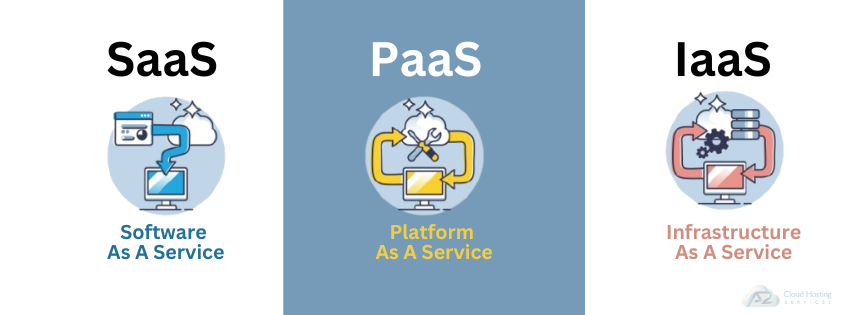In this rapid, dynamic, changing digital world, businesses have embraced cloud computing for the plethora of benefits, such as improved agility, scalability, and cost-saving, it offers. Cloud enablement framework is a strategic approach that assists an organization to integrate its computing, storage, and applications of software. In this article, we will cover aspects of cloud enablement services, all the while discussing the merits, difficulties, and best practices to ensure successful implementations of IT services in the cloud environment.
What is Cloud Enablement Services – A Core Concepts
These services refer to the process of preparing and transforming a business’s IT infrastructure, application, and processes by leveraging the power of cloud computing. In simple terms, it means making a business “cloud-ready” and enabling it to effectively operate in the virtual environment of the cloud. Below, we have discussed the five core concepts of cloud enablement services.
- Cloud Assessment: Current IT infrastructure will be evaluated to identify the workload suitable for the cloud. This concept will determine the organization’s readiness and suitability to migrate to the cloud.
- Cloud Strategy Development: Objectives for adopting cloud models are to be defined, a cloud model from among IaaS, PaaS, or SaaS is to be chosen, and a roadmap for cloud migration will be developed.
- Cloud Migration: This concept refers to the coordinated migration of applications as well as data, over to the cloud while minimizing and/or eliminating possible interruptions to doing business.
- Cloud Optimization: Monitoring and optimizing the utilization of cloud resources continuously for identifying cost-saving opportunities and performance enhancement.
- Cloud Governance: Designing cloud use policies and procedures, security, and compliance management, as well as proper utilization of cloud-based resources.
Key Benefits of Cloud Enablement
The main benefits of cloud enablement services are as follows:
- High Agility and Scalability: allows organizations to adjust the scale of resources on-demand. This provides a higher agility for businesses and accelerates the time-to-market by quickly deploying applications, products, or services
- Reduced costs: There is no large initial investment in hardware and software. Moreover, the pay-as-you-go model also helps save IT expenditure by billing the actually consumed resources to the business.
- Improved performance and reliability: Cloud providers offer highly optimized cloud servers that ensure excellent performance, availability, and reliability. This helps to ensure minimal downtime, all the while promoting customer satisfaction.
- Enhanced innovation: Cloud computing ensures easy accessibility of innovative technologies, such as AI, Machine Learning and big data analytics. These technologies can be used to attain crucial insights to make better and more informed decisions, which can help to enhance innovations.
- Improved security: Cloud adoption follows robust security protocols to safeguard the data and applications against threats such as cyber attacks . In addition, cloud-based security services like A2 Cloud Hosting Services ,assists to improve the overall security posture of the business.
Cloud enablement Models
Models of Cloud Enablement services include:

- IaaS – Infrastructure as a Service; delivers access to core computing resources: virtual machines, storage, and networking.
- PaaS: This enables the creation of an environment that enables the writing, deployment, and running of the applications.
- SaaS: Software as a Service is a model of software delivery where applications are provided over the internet on subscription.
Challenges of Cloud Adoption

- Vendor lock-in: Moving to the cloud can lead to vendor lock-in that makes it difficult to change providers.
- Data Governance: Such processes are highly complicated in the matter of data governance and compliance with the issues of privacy regulation- GDPR and CCPA.
- Skills Gap: There is a deficiency in the organizational capabilities that prevents the proper usage and management of cloud resources.
- Cloud migration: The process of moving complex applications or large data volumes into the cloud is difficult and may take a long duration of time.
Best Practices for Successful Cloud Enablement
Mentioned below are the best practices of cloud adoption solutions.
- Start with a clear strategy: Define a clear strategy for cloud adoption by including objectives such as cost-reduction, scalability, and time-to-market.
- Choosing the Right Cloud Provider: Find a cloud provider whose services align with your business niche.
- Security: Make use of security features, such as data encryption, access control, and regular audits.
- Focus on cost optimization: To ensure that the cost does not spiral out of control, continuously monitor the resources utilization and optimize the infrastructure for data redundancy..
- Creates a robust Cloud Team: Invest in training and developing a team to work effectively on the cloud environment.
Crafting a Cloud Enablement Strategy for Success with A2 Cloud Hosting Services
A2 Cloud Hosting Services focuses on improving the efficiency and productivity of your business via cloud adoption. With our expert team, we will guide you through:
- Cloud assessment and Strategy Development: The team of A2 Cloud Hosting Services will thoroughly analyze your existing IT infrastructure and will create a tailored strategy to answer the unique concerns of your business.
- Cloud Migration Planning and Delivery: From base planning to the migration of the final document, our experts will take care of it all.
- Cloud Optimization and Management: We will optimize your usage of cloud resources, all the while optimizing the servers for optimal performance.
- Cloud Security and Compliance: We can help you build strong security controls and maintain regulatory compliance.
We will continue the training and provide support for proper management and proper utilization of all cloud resources among your teams.
Find More: Dedicated server for Accounting Office.
Conclusion
Cloud enablement strategy is not a far-fetched idea anymore; in fact, it constitutes an integral element of any leading digital transformation strategy in the market. Through cloud computing, businesses can gain the upper hand in the rapidly changing dynamics of modern markets. At A2 Cloud Hosting Services, we take pride in availing resources and knowledge to enable businesses unlock their full potential via cloud adoption . Call us today for a better understanding of how we can support your business’s success in achieving cloud computing objectives.
Cloud adoption is no longer an option but a strategic method for business success in the digital era of cloud enablement. For more information, reach out to our cloud professionals for personalized guidance at +1800 217-0394.
Q1. Why is cloud adoption important?
Cloud adoption allows businesses to modernize their infrastructure, improve scalability, enhance collaboration, and reduce costs. It lays the foundation for digital transformation and innovation.
Q2. What are the risks of migrating to the cloud?
Key risks include data breaches, compliance failures, unexpected costs, and performance bottlenecks. Proper planning and robust security measures can mitigate these risks.
Q3. How can small businesses address cloud enablement issues?
Small businesses can start with a phased cloud adoption approach, focusing on high-priority applications. Partnering with managed service providers (MSPs) can also ease the transition.
Q4. How does vendor lock-in affect cloud enablement?
Vendor lock-in limits flexibility and can increase dependency on a single provider, making it challenging to switch or integrate with other platforms. However, this challenge can be addressed by adopting a multi-cloud strategy.

Brown Lopez is a Cloud Engineer and technical writer based in Austin, USA, who enjoys turning complex cloud ideas into clear, simple insights. With solid experience in cloud architecture and real-world projects, he loves creating practical content that helps professionals understand, build, and improve their cloud solutions with confidence.